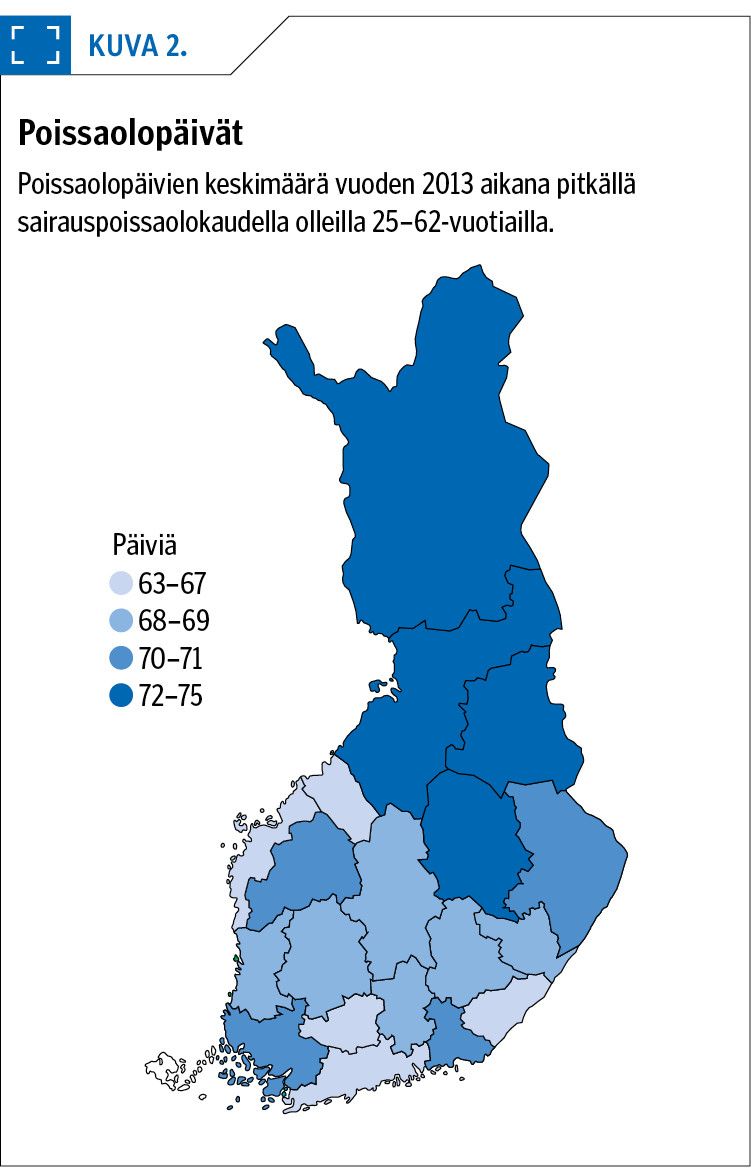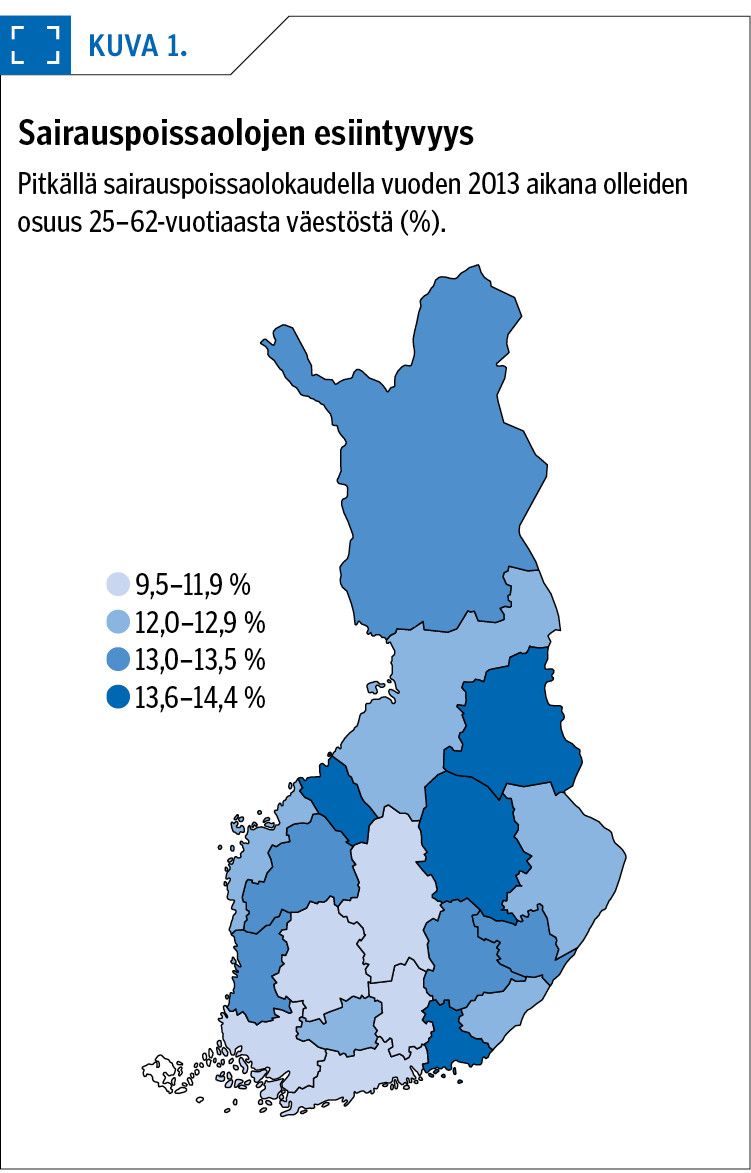Differences in population structures and morbidity only partly explain regional differences in long-term sickness absence

Background The aim of this study was to assess differences between Finnish regions in the prevalence of sickness absence and in the average amount of absence days, and to estimate whether differences in sociodemographic factors and morbidity explain these differences.
Methods A random sample consisting of 70% of the population aged 25–62 at the end of 2012 was retrieved from the register of the Social Insurance Institution of Finland (Kela). Data were collected from the registers of Kela and Statistics Finland. Regional proportions of persons receiving sickness allowance from Kela during 2013, as well as average time for which allowances were received, were calculated. Regression models were used to adjust for sex, age, marital status and occupational class as well as the municipality-level general morbidity index.
Results Clear cross-regional differences were found both in the prevalence of sickness absence and in the average number of absence days. Compared with the average, absences were less prevalent and shorter in Uusimaa and more prevalent and longer in Northern Finland. Adjusting for sociodemographic factors explained only a part of the observed cross-regional differences. Adjusting for the general morbidity index did not totally explain the remaining regional differences in sickness absence.
Conclusions Cross-regional differences in sickness absence are evident and cannot be explained by differences in sociodemographic population structures or morbidity. Reasons for regional variation warrant more research.
















